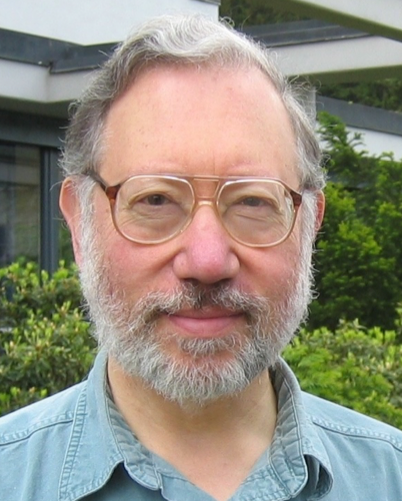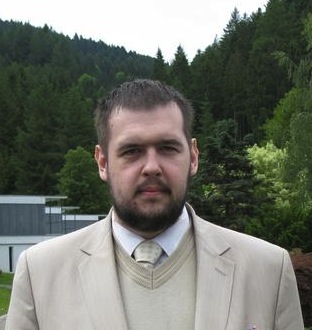
Professor Louis H. Kauffman (NSU and Illinois University in Chicago) will give a lecture course Virtual Knot Theory and Khovanov Homology. Weekly Zoom lectures will be held on Saturdays at 10:00AM by Novosibirsk time (GMT+7). The first lecture will be held on February 13, 2021.
Undergraduate and graduate students of all specialisations are cordially invited. The course is planned to be self-contained, no preliminary skills are required.
Summary: This course will study virtual knot theory, invariants of virtual knots and links and particularly it will concentrate on Khovanov homology for virtuals with applications.
Classical knot theory is the study of embeddings of the circle (knots) and of collections of circles (links) into three dimensional space (usually R3 or S3 — Euclidean three space or the three dimensional sphere). Since the 1920’s and the work of Alexander, Briggs and Reidemeister, the problem of isotopy of embeddings of knots and links in R3 can be expressed in terms of planar diagrams of the knots and links. Such diagrams are 4-valent plane graphs with extra structure showing how to weave the knot or link in three dimensional space. It is of interest to have diagrammatic theories for knots and links in other three manifolds. Virtual knot theory studies knots and links embedded in thickened surfaces up to handle stabilization. One uses embeddings in Sg x I where Sg is an orientable surface of genus g and I is the unit interval. Stabilization means that two embeddings that can be related by adding or subtracting handles from the surface are taken to be equivalent. One is interested in the least genus that supports a given virtual knot or link. There is a diagrammatic theory for virtual knots. This course will begin with that diagrammatic theory, explaining how it captures the three manifold topology and how one can define combinatorial invariants such as the Jones polynomial for virtual knots. Just as in graph theory, where phenomena change when one leaves the category of planar graphs, there are distinct differences between the behaviours of classical knots and higher genus virtual knots. In particular there are infinitely many virtual knots with unit Jones polynomial. No such examples are known in the classical domain.
Khovanov homology is a remarkable generalization of the bracket model of the Jones polynomial to a homology theory that is a knot and link invariant. We will describe Khovanov homology for classical knots and then generalize it to virtual knots in the manner of Vassily Manturov, after preparing sufficient background. Our work will include generalizations of the Lee Homology and the Rasmussen Invariant. If time permits, we shall discuss the Lipshitz-Sarkar stable homotopy generalization of Khovanov homology and the work of Kauffman, Nikonov and Ogasa on these homotopy constructions in virtual knot theory. This course will be self-contained and accessible to students and researchers outside of knot theory and algebraic topology.
Join Zoom-conference (link is updated)
Conference ID: 953 4969 7192
Passcode: 024218
Additional materials for the course DropBox
Lecture 1 lecture notes video
Lecture 2 lecture notes sorry, the video is missed
Lecture 3 lecture notes video
Lecture 4 lecture notes video BasicBracket.nb.pdf CrossingCodeAndBracket.pdf
Lecture 5 lecture notes video
Lecture 6 lecture notes video
Lecture 7 lecture notes video
Lecture 8 lecture notes video paper by E.S. Lee
Lecture 9 lecture notes video
Lecture 10 lecture notes video SelfLink
Lecture 11 lecture notes video PerfMatchingTalk IsaacsRufus
Lecture 12 lecture notes video
Lecture 13 lecture notes video
Lecture 14 lecture notes video

Professor Louis H. Kauffman (NSU and Illinois University in Chicago) gives a lecture course Classical and virtual knot theory. Weekly Zoom lectures are held on Saturdays at 10:00AM by Novosibirsk time (GMT+7). First lecture held on September 19, 2020. The video and lecture notes are available below.
Undergraduate and graduate students of all specialisations are cordially invited. The course is planned to be self-contained, no preliminary skills are required.
Summary: This course will begin with combinatorial knot theory via the Reidemeister moves, the Kauffman bracket model for the Jones polynomial, the associated Khovanov homology, quantum invariants of knots and links, skein polynomials and the Alexander polynomial. We will study both classical and virtual knot theory. We will consider surfaces that bound knots and links in three and four dimensional space and properties of cobordisms of knots and knotted surfaces in four space. Time permitting, we will cover relationships of knots with physics and with molecular biology. The prerequisites for this course are basic abstract algebra and point set topology. Some acquaintance with algebraic topology is useful background but not required for the course.
Join Zoom-conference (link is updated)
New Conference ID: 531 830 6496
New Passcode: 19283746
Additional materials for the course DropBox
Lecture 1 lecture notes video
Lecture 2 lecture notes video
Lecture 3 lecture notes video
Lecture 4 lecture notes video
Lecture 5 lecture notes video
Lecture 6 lecture notes video
Lecture 7 lecture notes video
Lecture 8 lecture notes video
Lecture 9 lecture notes video
Lecture 10 lecture notes video Gridlink.zip
Lecture 11 lecture notes video
Lecture 12 lecture notes video
Lecture 13 lecture notes supplement video
Lecture 14 lecture notes video

Professor Vassily O. Manturov (NSU and Bauman Moscow State Technical University) will give two lecture courses Knot theory and 4-manifolds. Weekly Zoom lectures are held on Tuesdays:
Knot theory at 17:05 by Moscow time (GMT+3).
4-manifolds at 18:30 by Moscow time (GMT+3).
More information here
Conference ID: 569 915 0694
Passcode: 901764

Professor Louis H. Kauffman (NSU and Illinois University in Chicago) gave a lecture course Combinatorial knot theory. Lectures were held in October and November, 2019 on Mondays and Wednesdays, 4:20 PM in the classroom 4109 (NSU).
Summary: This is an introductory course on combinatorial knot theory with emphasis on virtual knot theory and knotoids and on relationships between graph theory and knot theory. Virtual knot theory is a generalization of classical knot theory that includes the study of knots in thickened surfaces, and a diagrammatic approach to this structure. Knotoids are generalizations of classical knots to knotted intervals whose endpoints can be in any regions of the diagram. Knotoids have applications to the study of open-ended interval embeddings in space, and so to the embeddings of long molecules. One of the key topics in this study is cobordism of knots, and we shall discuss the relationship of knot and link cobordism with vortex reconnection for knotted vortices. The polynomial invariants of knots and links such as the Jones polynomial and its companion, the bracket polynomial, extend to virtual links and to knotoids. The same is true for Khovanov Homology and we will study at least one of these extensions. It is not known how to extend the Heegaard Floer Knot Homology to virtual knots and we shall discuss the combinatorics of this problem!
Here are links for introductory reading for the course:
Lecture notes
Bracket.pdf
LKStatMech.pdf
TLCat.pdf
Diagram.pdf
Here are links for further reading for the course:
IntroKhovanov.pdf
arXiv 1101.0665
arXiv 1211.1601
arXiv 1409.0324
arXiv 1409.5088
arXiv 1509.00578
arXiv 1602.03579
arXiv 1712.06711
henrichkauffman.pdf
Dresden.pdf
ThreeDTopologyPhysics.pdf
FI.pdf

Professor Louis H. Kauffman (NSU and Illinois University in Chicago) gave a lecture course Introduction to Knot theory. Lectures were held in September and October on Mondays and Wednesdays, 4:00 pm in the classroom 4109 (NSU).
Summary: This is a self-contained course in knot theory. It will be useful to have some familiarity with abstract algebra and the rudiments of point set topology. The course will begin with specific topics about graphs and map coloring, including the Penrose evaluation – counting colorings of trivalent graphs, the chromatic, dichromatic and Tutte polynomials and the relationship of these graph polynomials with the Potts model in statistical mechanics. We then introduce knot theory and virtual knot theory via knot and link diagrams and (generalized) Reidemeister moves. We first study writhe, odd writhe, linking numbers and then the bracket polynomial model for the Jones polynomial. We will show how the Jones polynomial is related to the Tutte and dichromatic polynomials and how it and the diagrammatic Temperley-Lieb algebra is related to the Potts model. We then branch out and study a number of topics in knot theory and virtual knot theory including, tangles and DNA replication, fundamental group and quandles, polynomial invariants of virtual knots and links, cobordism of classical and virtual knots, quantum link invariants via solutions to the Yang- Baxter equation. If there is time we will discuss Khovanov Homology as a generalization of the bracket model and Witten’s formulations of knot invariants in terms of a functional integral related to quantum field theory.
More information about the course will be posted at home-page